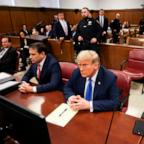Use of Anti-Snoring Device Rises
As more are diagnosed with sleep apnea, the use of special ventilators soars.
Aug. 14, 2008— -- The retirement haven of Lady Lake, Fla., boasts several golf courses and country clubs -- and apparently many residents who have restless sleep.
In three years, Medicare spending there for small bedside ventilators that help treat a serious sleep-related condition soared 324 percent, to $1.4 million last year.
Doctors in the central Florida town say their community is at the forefront of a national trend that has made the devices one of Medicare's fastest-growing medical equipment expenses, up 96 percent nationwide since 2004.
The booming sleep industry and an aging and increasingly obese population have prompted greater use of the devices, which treat sleep apnea, a condition that causes snoring, brief breathing lapses and tiredness.
"As we get older and as we get fatter, we have more sleep apnea," says Juan A. Albino, a pulmonologist and sleep specialist in Lady Lake.
Nationwide, the program for the elderly and disabled approved $571 million in payments for the devices, called continuous positive airway pressure (CPAP) machines last year, up from $291 million in 2004, Medicare data requested by USA TODAY show.
Spending could grow even faster under a new federal rule that makes it easier for patients to get the devices by testing for sleep apnea at home rather than in a sleep testing lab.
Medicare estimates that 2 to 4 percent of Americans have sleep apnea, which is linked to health problems such as coronary artery disease and strokes. About 10 percent of those over 65 and 20 percent of the obese suffer from the condition.
By city, Medicare data show:
CPAPs are the seventh-largest category of Medicare's $12.3 billion in spending on medical equipment. Spending on oxygen supplies, the largest category, rose 5.8 percent from 2004 to 2007. Spending on wheelchairs fell 17.6 percent after a fraud crackdown.




